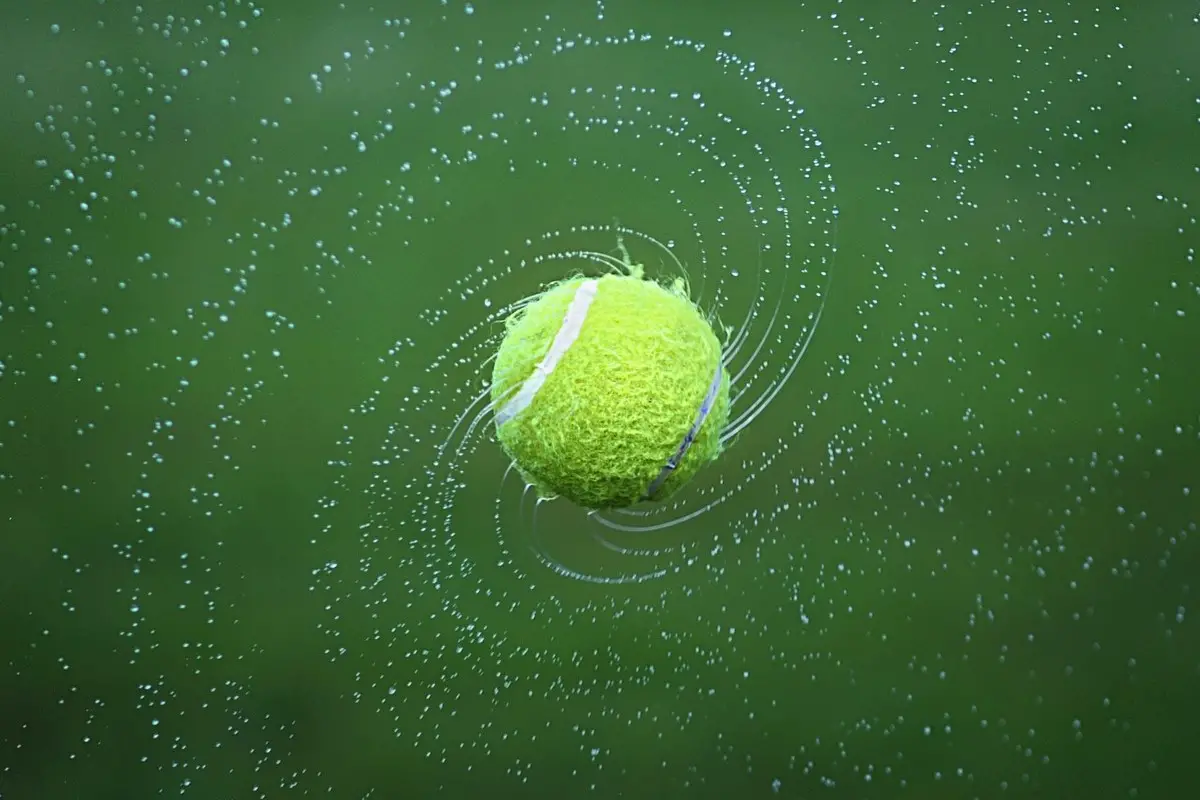Tennis, a sport that combines agility, precision, and power, relies on a seemingly simple yet crucial element – the tennis ball. Have you ever wondered why tennis balls have that distinctive fuzzy exterior? It’s not just for aesthetics; there’s science behind it. In this blog, we’ll delve into the world of tennis balls and unravel why they have fuzz.
Tennis balls have fuzz primarily for three reasons: aerodynamics, grip, and durability. The fuzz on the ball alters its aerodynamic properties, making it easier for players to control and manipulate during rallies. Additionally, the fuzz enhances the ball’s grip on the court surface, allowing for better spin and bounce. Let’s dive deeper into the main discussion to understand these concepts.
1 Aerodynamics and Fuzz
Tennis balls are designed to maximize player control and optimize the interaction with air during a match. The fuzz on a tennis ball plays a pivotal role in achieving this. When a tennis ball is struck, it experiences aerodynamic forces, including lift and drag. These forces can significantly impact the trajectory of the ball.
The fuzz on the tennis ball disrupts the airflow around it, creating a thin layer of turbulent air. This turbulent air layer reduces the drag force acting on the ball, allowing it to maintain a stable and predictable flight path. Without this turbulence, the ball would experience more significant drag, resulting in slower speeds and unpredictable bounces.
Furthermore, the fuzz affects the lift force on the ball. The spin imparted by players generates lift due to the Magnus effect. The fuzz’s turbulence enhances this effect, causing the ball to follow a curved trajectory. Players can manipulate the amount of spin and the curve’s direction by adjusting their shots’ angle and speed, thanks to the fuzz’s influence on aerodynamics.
2 Grip and Fuzz
Another critical aspect of tennis ball fuzz is its role in providing grip. Tennis is a sport that demands precision, and the ability to impart spin on the ball is vital for players. The fuzz contributes significantly to this aspect.
When a tennis ball contacts the court surface, the fuzz compresses slightly, creating tiny deformations in the fuzz fibers. These deformations increase the contact area between the ball and the court, improving friction. This increased friction allows players to generate more spin on the ball, creating shots with tremendous topspin or backspin.
Moreover, the fuzz provides a better grip on the racket strings. Combining the fuzz and the string pattern allows players to grip the ball better while hitting it. This enhanced grip facilitates controlled shots and better placement on the court.
Additionally, the fuzz influences the bounce of the ball. A tennis ball’s bounce is not solely determined by the pressurized air inside it but also by the interaction of the fuzz with the court surface. The fuzz absorbs some of the energy upon impact, which affects the ball’s bounce height and speed. This interaction adds an element of unpredictability to the game, making it more challenging and exciting.
3 Material and Durability
The fuzz on tennis balls is not a superficial feature but an integral part of the ball’s construction. It is typically made of nylon or a nylon-wool blend, which offers durability and performance. These materials are designed to withstand the rigors of tennis gameplay, including high-speed impacts with rackets and court surfaces.
Over time, as tennis balls are used, the fuzz wears down. This gradual wear and tear affect the ball’s aerodynamic properties and grip. Players often notice that a brand-new tennis ball feels significantly different from one that has been in play for several games. This change in feel is due to the reduction in fuzz, which alters the ball’s behavior.
To maintain fair and consistent gameplay, tennis tournaments often use fresh balls at regular intervals, ensuring all players have access to balls with similar fuzz levels. This practice helps maintain the integrity of the game and ensures that the impact of the fuzz on ball behavior remains relatively constant.
Related Articles
Who Has Won All 4 Grand Slams In The Same Year?
How Much Do Pro Tennis Players Make?
Grasping for Air: Heat a Major Issue at Olympic Tennis Venue


